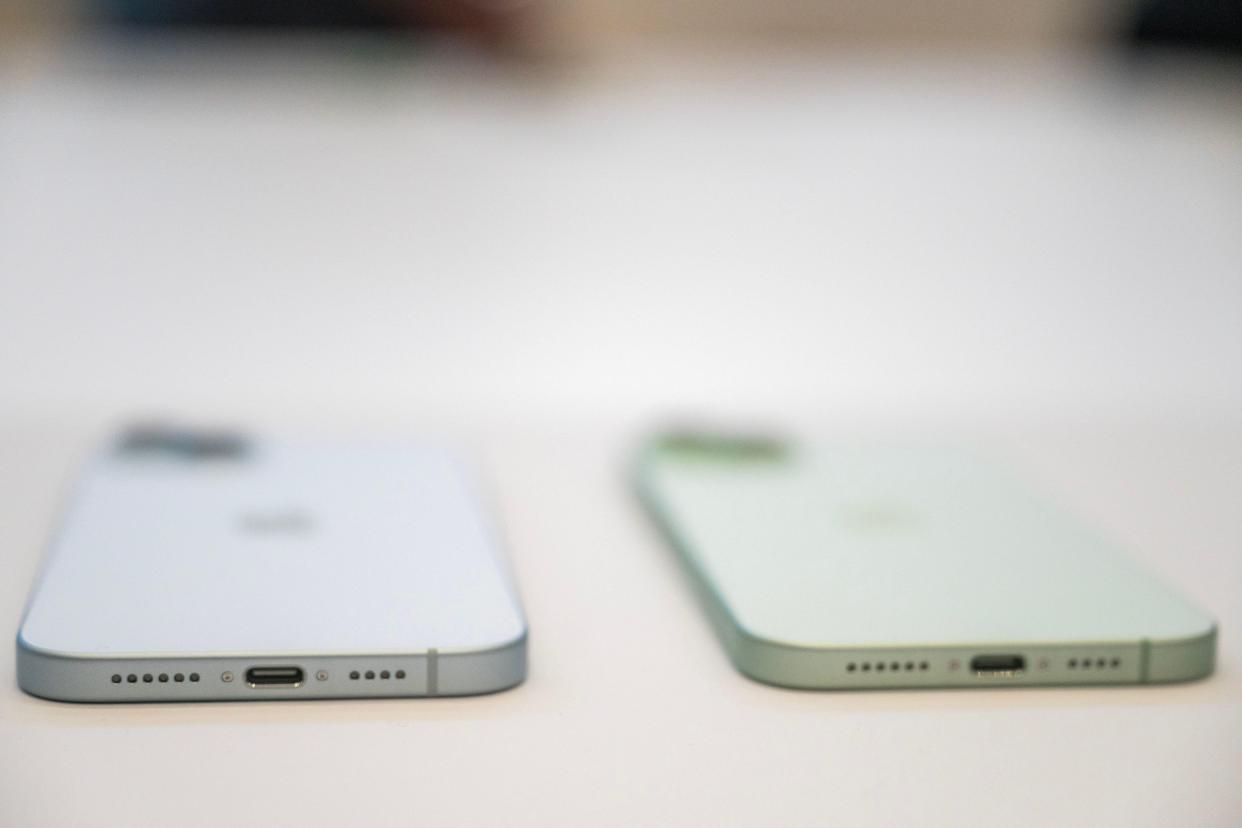The iPhone Just Got a Little Less Special. Good!

The biggest news in the iPhone world is old news. At Tuesday’s much-hyped “Wonderlust” event, Apple announced a slew of upgraded products, including new Apple Watch models and snazzy mobile-gaming improvements. But the centerpiece was pretty simple: The iPhone 15 will have a USB-C charging port, which will allow it to share chargers with Macs and (gasp) PCs. Apple is officially retiring the company-exclusive Lightning port that has defined the iconic smartphone since 2012, when it transitioned from a 30-pin dock connector. The next-generation AirPods Pro and the EarPods will also get USB-C connects.
The iPhone is, in the world of electronics, a late adopter to the USB-C port. Representatives from the tech giant poked in at different points throughout the event to extol the overall benefits of the switch, like faster transfer speeds for large photo and video files between your phone and laptop, along with the ability to charge your AirPods and Apple Watch straight from your phone.
Really, Apple is just complying with European Union regulations that go into effect next year, requiring all “small and medium-sized portable electronics” sold within the bloc to have USB-C ports. This so-called common-charger standard has a couple main benefits: It reduces electronic waste by cutting down on the number of chargers people need to buy, and it also makes it easier to find a charging cable no matter what device you’re using. Since the EU is Apple’s second-largest market, and lawmakers from Apple’s largest market (the United States) have expressed interest in crafting universal-charger laws, Apple is basically backed into a corner here.
Why did Apple insist upon selling iPhones with Lightning charging ports for so long, though? Well, as the Verge put it in 2021: “The Lightning port isn’t about convenience; it’s about control.” Apple had a port and charger that no other brand had, and it could make money from all the supplementary gear necessitated by Lightning’s exclusivity—everything from charging cables, to adapters, to dongles, to other Apple products with iPhone-connection features. The unique feature also helped lock customers in to the Apple ecosystem: Why be curious about the Android when you have all these unique Apple contraptions?
Over time, Apple has proved amenable to USB-C chargers on products like laptops and iPads, which made the insistence on keeping its phone on Lightning all the less sensible. But even throughout the life span of the Lightning charger, Apple has made massive changes to how its other products charge, whether by removing the headphone jack from iPhones or converting the Apple Watch to wireless charging. Nevertheless, Apple continued to argue that abandoning Lightning would fuel more e-waste by making prior chargers obsolete, that it would cost a lot and constrict Apple’s innovation, that its smaller-size devices just could not fit a USB-C. Of course, the iPhone 15 (which goes up for preorder Friday, and lands in stores on Sept. 22) exposes how thin those excuses were.
Yes, the USB-C change will ultimately make older Apple Lightning infrastructure obsolete, leading to cables and hubs that will have to be responsibly recycled and disposed of. But ultimately, the switch will be better for the environment and consumers, alike, by reducing the production of frivolous, non-universal charging apparatuses. The “Wonderlust” event, notably, made a big show out of Apple’s environmental and climate commitments this year, even featuring a short film starring Octavia Spencer as “Mother Nature.” It didn’t tout the USB-C in this context, but it could have: Fewer chargers (and less packaging for said chargers) is, in the long run, good for the planet.
Now, are there drawbacks with the USB-C? Certainly, at least when it comes to initial consumer convenience. There were complaints when the iMac installed a USB port back in the day—a time when there weren’t many USB-capable products!—and when the Lightning came into being in 2012, there was a whole dongle boondoggle. There’s also legitimate concern over charging speed, when it comes to whether certain USB cables can accommodate the speeds that iPhone fans may be accustomed to.
Apple is trying to sweeten the deal for users who might be hesitant to switch to an iPhone with a USB-C charging port. iPhone owners, beginning with the iPhone 11, can trade in their smartphones for the newer models with a nice rebate in return (e.g., up to $800 off the $899 iPhone 15 Plus). Apple may also benefit from a significant number of Android users willing to switch to Apple now—the phone-trading marketplace SellCell found in a survey that about 44 percent of Android enthusiasts would consider making the jump if iPhones stick with the new USB-C.
With the iPhone 15’s USB-C, Apple has backed down from a stubborn fight that had long miffed both regulators and consumers. Now, we’ll see how much this changes its overall business.

